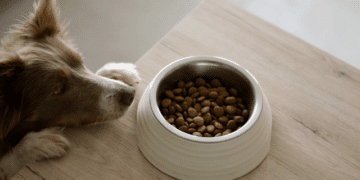Spaying or neutering your pet is one of the most responsible and beneficial decisions you can make as a pet owner. These common procedures not only help control the pet population but also offer numerous health and behavioral benefits for your furry companions. However, many pet owners still wonder: when is the best time to spay or neuter your pet?
This comprehensive guide will explain what spaying and neutering involve, the best age for the procedure, the health benefits, potential risks, and important considerations to help you make an informed decision.
What Is Spaying and Neutering?
Spaying and neutering are surgical procedures that sterilize animals, preventing them from reproducing.
-
Spaying refers to the surgical removal of a female animal’s ovaries and uterus.
-
Neutering (or castration) refers to the surgical removal of a male animal’s testicles.
These procedures are typically performed under general anesthesia by a licensed veterinarian. While both are routine surgeries, they do require careful post-operative care and monitoring to ensure a smooth recovery.
Why Spaying and Neutering Matter
Spaying and neutering are essential tools in reducing the number of unwanted animals. Millions of dogs and cats are euthanized each year due to overpopulation. By preventing unwanted litters, you’re helping to reduce the strain on animal shelters and rescue organizations.
Aside from population control, pet sterilization offers long-term health and behavioral advantages that can improve the quality of life for both you and your pet.
When to Spay or Neuter Your Pet
The best age to neuter a dog or spay a cat depends on the animal’s species, breed, size, and overall health. Here are general guidelines:
Cats
Most veterinarians recommend spaying or neutering cats between 4 and 6 months of age. At this age, cats typically haven’t reached sexual maturity, which helps avoid unwanted behaviors like spraying or yowling.
Spaying or neutering a cat early can also reduce the risk of certain diseases and behavioral problems, making it easier to raise a well-adjusted indoor companion.
Dogs
The timing for spaying or neutering dogs can vary more significantly, especially when considering the dog’s size and breed:
-
Small-breed dogs (under 45 pounds when fully grown): Spaying or neutering is usually recommended around 6 months of age.
-
Large-breed dogs (over 45 pounds): It’s often advised to wait until 12 to 18 months of age, particularly for males. Waiting allows for more time to develop physically and can help reduce the risk of orthopedic issues or certain cancers.
Always consult your veterinarian, who can assess your dog’s growth and provide personalized advice.
Benefits of Spaying and Neutering
Spaying and neutering offer a variety of health and behavioral benefits, including:
Health Benefits
-
Females: Spaying prevents uterine infections (like pyometra) and greatly reduces the risk of breast cancer if done before the first heat cycle.
-
Males: Neutering eliminates the risk of testicular cancer and can reduce the risk of prostate disease.
Behavioral Improvements
-
Reduces roaming tendencies, especially in male pets
-
Decreases territorial marking (like spraying)
-
Helps manage aggression and mating-related behaviors
-
Lowers the risk of fights with other animals
These benefits contribute to a safer and more peaceful home environment for both pets and their owners.
Risks and Considerations
While spaying and neutering are safe, routine procedures, there are a few things to consider:
-
Timing matters: Neutering a dog too early especially a large-breed male may increase the risk of joint disorders, such as hip dysplasia or torn ligaments.
-
Weight gain: Altered pets may experience a slower metabolism, requiring adjustments to their diet and exercise routine.
-
Surgical risks: As with any surgery, there is a minor risk of complications from anesthesia or infection, although these are rare with proper care.
Weigh the pros and cons and consult your veterinarian about the best age and approach for your specific pet.
Special Situations
Shelter and Rescue Pets
Many shelters and rescues spay or neuter animals as early as 8 weeks of age before adoption. Early-age sterilization is safe when performed by experienced veterinarians and helps ensure pets are adopted responsibly.
Senior or Health-Compromised Pets
In older animals or those with medical issues, your vet may advise postponing or forgoing the procedure altogether. The decision should always be made based on the pet’s health status and quality of life.
Breed-Specific Recommendations
Some breeds, particularly large or giant breeds like Great Danes or Golden Retrievers, may benefit from delayed sterilization. Always ask your vet about breed-specific concerns when planning surgery.
Post-Op Care and Recovery
Once your pet is spayed or neutered, proper post-operative care is essential:
-
Limit activity for 7–10 days to prevent complications
-
Prevent licking or biting the incision (use an Elizabethan collar if necessary)
-
Keep the incision clean and dry
-
Monitor for signs of infection like swelling, redness, or discharge
-
Follow all veterinarian instructions and attend any follow-up appointments
Most pets recover fully within a week or two and return to normal activities quickly.
Conclusion
Knowing when to spay or neuter your pet is a vital part of responsible pet ownership. It not only contributes to controlling the pet population but also offers numerous health and behavioral benefits. The best time to spay or neuter your pet depends on various factors, including their species, size, and health, so always consult your veterinarian for tailored guidance.









